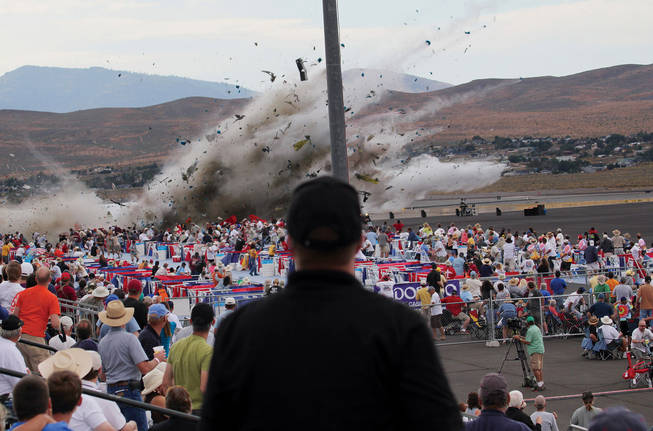
Ward Howes, AP
Death from above: A scene of the destruction from the air show in Reno held last September.
Wednesday, Jan. 11, 2012 | 3:33 p.m.
The show must go on, even when people die. At least, that’s how the Reno Air Racing Association feels. The group just announced that it will seek to hold another air show in September. And we all remember what happened last September—A P-51 Mustang fighter jet crashed into the show’s seating area, killing 11 and injuring 70.
The next step: getting permission from the Federal Aviation Administration. The FAA is investigating eight crashes, including one that took place in Reno during a June practice.
The sad truth is, air show crashes aren’t that rare. The day before the big September crash, there was another one—right at the Reno Air Race. And the day after the big crash, there was another crash, in Martinsburg, West Virginia.
So what keeps these shows going? Well, for starters, they make an estimated $110 million every year. And according to local businesswoman Angie Morelli, who used to work on helicopters in the Marines Corps, the shows offer military spouses a place to connect. Plus, Morelli points out, the kids like watching the planes.
That said, Morelli feels the shows’ costs outweigh their benefits—and she’s not even talking about it in terms of human life. “The air shows waste resources. It costs a lot of money to fly a plane or a helicopter. And a lot of the people doing the flying—the people on active duty—don’t have a say in the situation. For them it’s just an unpaid weekend.”

Join the Discussion:
Check this out for a full explanation of our conversion to the LiveFyre commenting system and instructions on how to sign up for an account.
Full comments policy